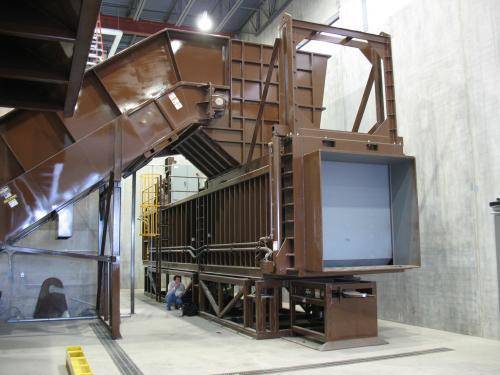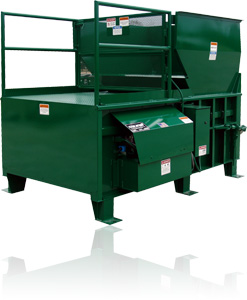Exploring the Crucial Duty of Waste Tools in Modern Recycling Processes and Sustainable Waste Disposal Practices
The vital function of waste equipment in modern-day recycling processes emphasizes its value in accomplishing lasting waste disposal methods. Advanced systems, such as automated arranging modern technologies and compactors, not just improve effectiveness but also play a pivotal function in lowering contamination rates and enhancing product recuperation. As the demand for more sustainable remedies expands, it is necessary to examine just how these innovations adjust to advancing difficulties within waste management. What cutting-edge advancements are on the horizon that could further change these processes?
Relevance of Waste Equipment
Why is waste equipment essential in the recycling procedure? By facilitating the splitting up of materials, waste tools reduces contamination, which is paramount in guaranteeing top quality recyclables that can be reintroduced into manufacturing cycles.
In addition, waste equipment boosts functional efficiency and safety and security within recycling centers. Advanced equipment, such as shredders and balers, enables the rapid processing of big quantities of waste, lowering labor expenses and processing time. Furthermore, making use of specific devices lowers the risk of injury amongst workers by automating hazardous tasks.
Furthermore, the environmental influence of recycling is intensified by effective waste devices. By maximizing the reusing process, facilities can significantly decrease the quantity of waste sent out to landfills, thereby adding to sustainability efforts. In conclusion, waste devices is not simply a supplementary element of recycling; it is a basic element that drives efficiency, safety, and ecological stewardship in contemporary waste management techniques.
Sorts Of Waste Tools
The effectiveness of recycling procedures is very closely linked to the particular kinds of waste equipment made use of in the process. baler rental. Numerous groups of tools are integral to the collection, sorting, processing, and transport of recyclable materials
First of all, collection devices, such as waste collection vehicles and bins, is essential for collecting recyclables from different sources, consisting of household, commercial, and industrial places. As soon as collected, sorting tools, consisting of conveyor belts, shredders, and magnetic separators, plays a critical duty in distinguishing various product types, ensuring that pollutants are removed prior to handling.
Handling tools, such as balers and compactors, better prepares materials for reusing by compressing and packaging them into workable dimensions. This not just maximizes room but additionally enhances transportation efficiency. Additionally, specialized equipment like granulators and extruders is made use of for transforming materials right into multiple-use forms, specifically in plastic recycling.

Duty in Recycling Procedures
In reusing procedures, the duty of waste equipment is crucial in ensuring performance and efficiency at every next phase. This tools incorporates a series of machinery created to handle, procedure, and type products that are to be recycled. The preliminary phase includes collection and transport, where compactors and balers play an important function in enhancing the quantity of products for transportation, hence lowering functional costs.
When at the reusing best site center, shredders and crushers enter into play, damaging down materials into convenient sizes ideal for further handling. These makers add to improving the surface of recyclables, promoting more effective product healing. Sorting systems, equipped with sophisticated technologies such as conveyor belts and optical sensing units, make sure that products are precisely separated by kind, therefore maximizing the top quality of the recycled end item.
Furthermore, specific equipment for processing certain materials-- such as glass, plastics, and metals-- makes sure that each kind is taken care of in the most efficient way. In general, the assimilation of innovative waste tools right into the recycling process not only enhances procedures yet additionally significantly adds to the total healing rates of valuable products, underscoring its important role in contemporary recycling initiatives.
Effect On Lasting Practices
With the efficient operation of waste equipment, reusing processes considerably boost lasting methods across various markets. By streamlining sorting and handling functions, progressed waste devices decreases contamination in recyclable products, thus boosting the top quality of recycled outcome.

Additionally, the integration of clever innovations in waste monitoring systems enables for real-time data tracking and evaluation, causing more enlightened decision-making and operational efficiencies. As markets increasingly prioritize sustainability, click to investigate the duty of waste devices ends up being vital fit techniques that align with ecological stewardship and regulative compliance. Ultimately, the synergy in between waste devices and recycling procedures plays a vital role ahead of time broader sustainability objectives throughout communities and industries alike.
Future Patterns in Waste Management
Emerging trends in waste administration are positioned to improve the landscape of recycling and source healing significantly. Among the most essential shifts is the integration of advanced innovations such as artificial knowledge, artificial intelligence, and the Web of Things (IoT) These developments promote improved sorting processes, boosting the effectiveness and precision of reusing procedures. Smart waste containers equipped with sensors can keep an eye on waste levels in real-time, optimizing collection courses and decreasing functional expenses.
In addition, the round economic climate design is acquiring traction, promoting the concept of reusing materials instead than dealing with them. This pattern motivates companies to create items with end-of-life considerations in mind, driving the need for cutting-edge waste monitoring remedies.
In addition, public recognition and interaction in sustainability practices are on the surge, leading to increased participation in recycling programs. Government policies are also advancing, with more stringent laws on waste disposal and motivations for sustainable techniques.
As these trends assemble, they produce a more efficient, lasting waste monitoring system that not just reduces ecological effect but additionally fosters financial growth via source recuperation and technology in waste tools. The future of waste management looks appealing, driven by technology and a dedication to sustainability.
Conclusion
In final thought, waste tools plays an essential duty in enhancing the effectiveness and efficiency of contemporary recycling processes. As waste monitoring proceeds to develop, the value of innovative waste devices will certainly remain extremely important in accomplishing sustainability objectives and attending to the obstacles of source depletion.